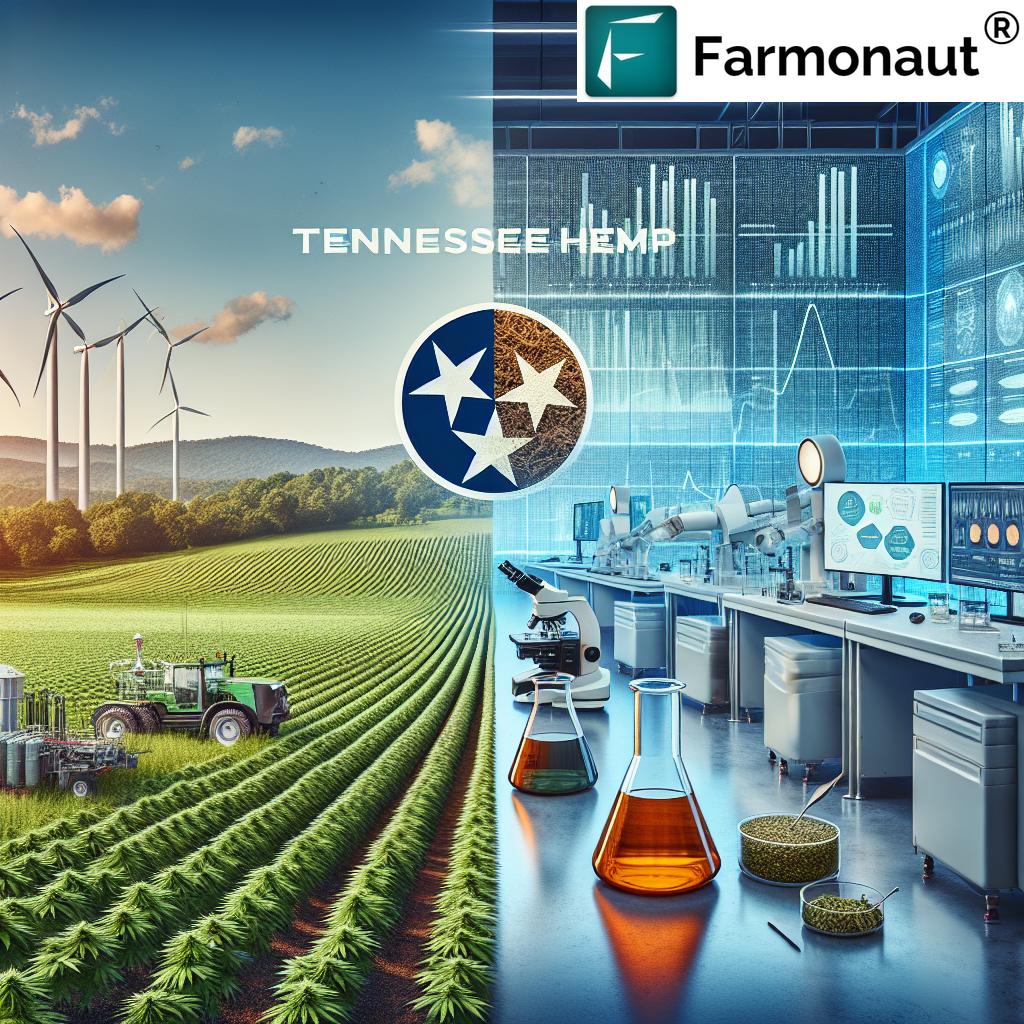California Department of Food and Agriculture: 2025 Stats and Statewide Trends
Introduction: California Agriculture in Focus
California’s agricultural landscape remains foundational to the United States, consistently contributing over 13% of the nation’s total agricultural output by value. As the leading state in agriculture, California not only produces a vast quantity of fruit, nut, and vegetable crops, but does so with a remarkable balance of sustainability, innovation, and adaptability, even in the face of continual challenges.
The California Department of Food and Agriculture (CDFA) is the steward of this dynamic sector, providing authoritative statistics, reliable policy guidance, and serving as a vital resource for farmers, stakeholders, policymakers, and researchers alike.
This comprehensive review draws upon the influential “California Agricultural Statistics Review 2019-2020” as a foundational reference to explore trends, insights, and projections that shape the industry through 2025.
Understanding the Role of the California Department of Food and Agriculture (CDFA)
At the core of measuring and advancing California’s food, crop, and resource output is the California Department of Food and Agriculture, also known as the department of agriculture California or California agriculture department.
- Mission: To protect and promote California’s agriculture through sound policy, rigorous oversight, and valuable statistical data.
- Methodology: The California Agricultural Statistics Review 2019-2020 collects and analyzes production, export, and sustainability information from across the state, involving leading agricultural counties and all major commodities.
- Impact: These statistics and reviews serve as an essential reference for crop management, policy direction, investment strategy, and research.
CDFA’s review remains a critical resource, providing a comprehensive view of the agricultural landscape as California advances into 2025.
California Agricultural Statistics in 2025: A Comprehensive Review
According to the CDFA’s “California Agricultural Statistics Review 2019-2020”, and as projected through 2025, California’s output remains unmatched in the United States, underlining the state’s continued dominance in both quantity and value. This foundation is regularly updated and expanded, serving as a port of call for those seeking to understand the full breadth of the state’s food and crop production.
- Value: California contributes more than 13% of national agriculture output by value, reaffirming its position as the top agricultural state.
- Diversity: Over 400 different commodities are produced, with major output in fruit, nut, and vegetable crops.
The state maintains its agricultural resilience in spite of ongoing and new challenges such as drought conditions, fluctuating markets, and labor shortages. This adaptability speaks to industry-wide commitment to innovation and sustainability practices.
For a more dynamic view of current and future innovations in California agriculture, watch:
Top Agricultural Counties: Leaders in Production and Innovation
One of the key insights from the CDFA’s report is the identification of top agricultural counties in California that drive the bulk of the state’s output. These counties consistently rank as leading producers, generating billions in output and showcasing a remarkable range of specialization and innovation in agriculture.
Fresno County remains at the forefront, generating over $8 billion in 2025, a testament to its adaptability, technological implementation, and rich agricultural heritage.
- Other Counties of Note: Tulare, Kern, Monterey, and Merced all contribute significantly, with each specializing in a diverse range of products from dairy, almonds, lettuce, to grapes.
- These counties collectively showcase the remarkable adaptability of California’s microclimates and soil types, making them uniquely suited for multi-crop farming systems.
For a comprehensive yet accessible summary, see the table below:
| County Name | Estimated Agricultural Output (USD Million) | Top Crops/Products | Year-over-Year Growth (%) | Sustainability Initiatives Adopted |
|---|---|---|---|---|
| Fresno | 8,032 | Almonds, Grapes, Pistachios, Dairy, Lettuce | 5.6 | Water-saving tech, organic acreage increase, precision irrigation |
| Tulare | 7,100 | Dairy, Oranges, Table Grapes, Cattle, Walnuts | 4.9 | LED lighting in dairies, advanced nutrient management |
| Kern | 6,680 | Grapes, Almonds, Citrus, Pistachios, Carrots | 5.2 | Drip irrigation, cover cropping, solar energy |
| Monterey | 5,470 | Leafy Greens, Strawberries, Broccoli, Grapes | 3.7 | Recycled water use, organic conversion support |
| Merced | 4,210 | Dairy, Almonds, Sweet Corn, Tomatoes | 3.5 | Soil health monitoring, efficient fertilizer programs |
This table provides an at-a-glance comparison enabling readers to gauge output, leading crops, growth trends, and sustainability initiatives in California’s top agricultural counties as of 2025. CDFA’s statistics show that adoption of water-saving technology and organic acreage is accelerating throughout these counties.
Production Trends: 2019-2020 Insights and Forecasts for 2025
The California Department of Food and Agriculture “California Agricultural Statistics Review 2019-2020” provides deep insights into production dynamics, enabling stakeholders to project and strategize for the years ahead.
- Stability & Growth: Despite drought conditions, labor shortages, and market fluctuations, the sector has maintained resilience and adaptability, with many counties reporting steady or increasing year-over-year growth.
- Commodity Trends: Almonds, grapes, dairy, and lettuce remain top commodities, with notable acreage expansion and market value increase through 2025.
- Technological Impact: Data-driven decision-making, satellite-based resource management, and AI-powered advisory systems are reshaping how farmers approach agricultural challenges.
- Diversification: The range of microclimates and soil types in the state make California uniquely suited to a diverse, multi-crop farming system that is unparalleled in the nation.
For more information on how satellites, drones, and AI-driven solutions are saving farms and improving yields, check out this insightful video:
Export Markets & Global Reach
California’s global impact extends far beyond its borders. The state exports nearly 40% of its agricultural products worldwide, underscoring the importance of sustainable practices to meet the most stringent international quality standards.
- Key Markets: Asia, Europe, and North America remain the primary destinations for California’s exported commodities.
- Value: Exported goods range from processed foods to raw agricultural materials, with wine, nuts, citrus, and fresh produce leading the charge.
- Market Expectations: With evolving demands for transparency, traceability, and sustainability, meeting international consumer expectations becomes paramount.
For more insights on regenerative agriculture and how carbon farming and soil health are shaping California’s global agricultural reputation, watch below:
Labor Challenges, Technology Adoption, and the Future of Farm Management
The California Department of Food and Agriculture’s review highlights ongoing labor challenges such as seasonal worker shortages and the increasing need for skilled farmworkers. These trends are driving:
- Technological Innovation: Investments in mechanization, robotics, and platforms that support precision agriculture are enabling farms to do more with fewer hands.
- Workforce Development: The state, together with key stakeholders, is focusing on training, upskilling, and providing resources to attract and retain labor.
- Policy Influence: Immigration policies and ongoing advocacy from agricultural leaders are shaping the future labor landscape.
Access to real-time crop health monitoring, resource management, and AI-driven advisories is helping farmers manage these challenges more effectively than ever before.
If you want to see how satellite-based technology is practically revolutionizing crop health monitoring and large-scale farm management, watch:
Sustainability, Climate Resilience, and Innovations in Farming
The evolving climate and the increasing incidence of wildfires and droughts underscore the need for robust sustainable practices in California. The CDFA review not only emphasizes crop and livestock statistics but also collaborates across sectors to support sustainable land management, including forestry.
- Forest Management: The state is integrating forest conservation with agricultural strategy to manage wildfire risk, promote biodiversity, and maintain ecosystem health.
- Water Management: Drip irrigation, soil moisture monitoring, and recycled water programs are vital for optimizing scarce water supplies.
- Climate-Resilient Crops: Research and on-farm trials are supporting the development of crop varieties less susceptible to drought and disease.
- Carbon Footprinting: Measuring, tracking, and reducing greenhouse gas emissions is fast becoming the norm, not the exception.
For a demonstration of how advanced water management technologies and precision agriculture practices are making a difference, view:
Precision Agriculture & Technology: Farmonaut’s Contribution to Sustainable California Agriculture
As agriculture in California heads deeper into the digital era, precision agriculture is at the heart of progress. At Farmonaut, our mission is to make data-driven, sustainable, and precision farming accessible to all farmers worldwide—including those in California. We’re dedicated to integrating satellite-based insights, AI advisory, and advanced resource management tools right into the hands of our users.
- Satellite-Based Crop Health Monitoring: Our platform delivers real-time insights on NDVI (vegetation health), soil moisture, and other critical parameters—helping farmers make smarter crop, irrigation, and input decisions.
- Jeevn AI Advisory System: Our AI tool personalizes farm advisories, delivering weather forecasts, and data-driven crop strategies by integrating multi-source agricultural statistics.
- Blockchain-Based Traceability: Through our traceability solution, food supply chains become transparent and secure, from farm to consumer, ensuring quality and authenticity—an essential requirement for meeting international market standards.
- Fleet and Resource Management: Our fleet management tools help agribusinesses optimize vehicle and machinery usage, reduce costs, and improve the safety of operations—vital in large California farms.
- Carbon Footprinting: Our carbon footprint tracking tool empowers agricultural entities to monitor emissions, comply with regulations, and enact meaningful steps toward sustainability.
- Large Scale Farm Management: For expansive agricultural counties in California, our agro-admin app provides scalable, modular solutions to oversee multiple plots, manage inputs, and track progress across diversified operations.
- Crop Loan and Insurance Support: Through our crop loan and insurance verification platform, financial institutions benefit from satellite-based data to streamline approvals and reduce fraud risks, facilitating smoother financial support for farmers.
Discover how satellite data, AI, and geotagging are shaping the future of farm management with this in-depth look at precision ag technology:
Ready to experience innovative farm management solutions?



For developers and research institutes examining advanced agricultural data integrations, access our Farmonaut API and API Developer Docs for real-time satellite and weather data.
To get started with our satellite-based monitoring and management, here’s a helpful video tutorial:
For those seeking accurate, scalable, and affordable solutions for detecting crop stress and optimizing input use, view our overview here:
FAQ: California Department of Food and Agriculture & 2025 Agricultural Trends
What is the California Department of Food and Agriculture (CDFA) and what does it do?
The California Department of Food and Agriculture is the primary agency responsible for supporting, protecting, and promoting California’s agricultural industry. The CDFA compiles essential statistics, guides policy, and ensures the state’s position as an agricultural leader by serving as an authoritative resource for stakeholders across the sector.
How accurate and current are the California agriculture statistics?
The latest published comprehensive review, the California Agricultural Statistics Review 2019-2020, remains foundational. The CDFA regularly updates data sets and analytical tools to reflect ongoing trends and inform projections for 2025 and beyond.
Which counties lead California in agricultural output?
As of 2025, Fresno, Tulare, Kern, Monterey, and Merced counties are consistently the top agricultural producers, driving the majority of the state’s value and output. Each specializes in a range of high-value crops and livestock products.
What are the main sustainability initiatives in California agriculture?
Water-saving technologies, organic acreage growth, regenerative agriculture, and precision farming solutions are among the key strategies that California farms employ. These are designed to boost efficiency, protect the environment, and meet both domestic and international standards.
Why does the CDFA review highlight technology and innovation?
Continued technological advancements, such as real-time crop health monitoring, AI-driven advisories, and resource optimization, are vital for California’s ongoing dominance in domestic and global markets. Innovation ensures resilience, adaptability, and growth in a dynamic environment.
How do Farmonaut’s solutions support California agricultural stakeholders?
At Farmonaut, we empower farmers, agribusinesses, and policymakers with cutting-edge tools for monitoring crops, tracking resources, and optimizing decision-making. Our platform fosters increased productivity, cost savings, and sustainable practices at any scale.
Where can I access Farmonaut and its services?
Our platform is accessible via browser, Android, and iOS apps:
Web App |
Android |
iOS
Conclusion: The Future of California Agriculture
The California Department of Food and Agriculture’s “California Agricultural Statistics Review 2019-2020” provides a foundational resource for understanding the state’s agricultural prowess, challenges, and opportunities as we head into 2025.
- Insightful statistics from the CDFA guide farmers, policymakers, and researchers to make data-driven decisions and adapt to trends such as climate variability, labor shortages, and global market demands.
- The ongoing dominance of top counties—including Fresno, Tulare, Kern, Monterey, and Merced—illustrates the diversity and dynamism inherent in California agriculture.
- Sustainability initiatives, technological advancement, and a commitment to exports secure California’s position as the powerhouse of U.S. agriculture into 2025 and beyond.
- At Farmonaut, we are committed to driving this innovation further, empowering farms of all sizes in California with affordable, actionable, and real-time insights.
As markets evolve and the world demands more responsible food production, California’s agricultural sector—supported by ongoing data-driven innovation and robust state support—will remain a beacon of success and sustainability.










